César E. Chávez National Monument, known also as Nuestra Señora Reina De La Paz (La Paz), is a site of exceptional historical significance at the national level for its association with César E. Chávez and the United Farm Workers of America (UFW). During their time at La Paz, from 1970 to 1984, the farm worker movement transitioned into a modern labor union, bringing many improvements in farm workers' lives across the nation.
"Once social change begins, it cannot be reversed. You cannot un-educate the person who has learned to read. You cannot humiliate the person who feels pride. You cannot oppress the people who are not afraid anymore." Cesar Chavez, Address to the Commonwealth Club in San Francisco, Nov. 9, 1984
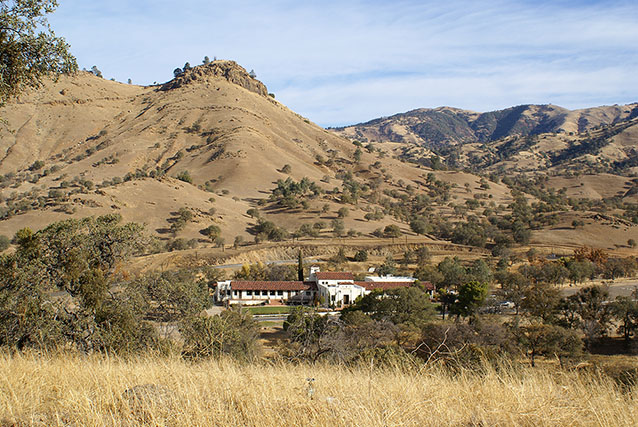
NPS
César E. Chávez National Monument, known also as Nuestra Señora Reina De La Paz (La Paz), is located in Tehachapi Pass, situated in the Tehachapi Mountains that separate the Central Valley of California on the northwest, and the Mojave Desert on the southeast. The monument, which is located northeast of the town of Keene, is operated by the National Park Service and the National Chavez Center.
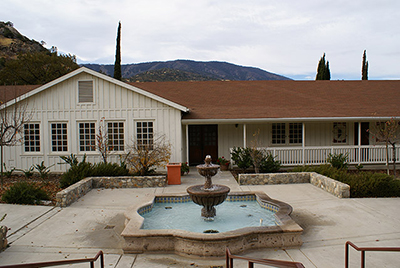
NPS
La Paz has acquired exceptional historical significance at the national level for its association with César E. Chávez, one of the most important Latino leaders in the history of the United States, and for its association with the United Farm Workers of America (UFW), the first permanent agricultural labor union established in the history of United States. La Paz's close association with Chávez and the UFW gives the property exceptional importance.
The property's period of significance extends from 1970 to 1984, a period that represents a distinct phase in the productive life of César E. Chávez and in the larger history of the farm worker movement. During these years, the farm worker movement that Chávez began to lead in 1962 transitioned into a modern labor union, the UFW, which brought many improvements in farm workers' lives across the nation. The cultural landscape of La Paz reflects several periods of development that have occurred during the history of the property, including subsistence activities by native peoples, a county quarry, a California State hospital, and its national significance as the home and workplace of César E. Chávez and the farmworker movement.
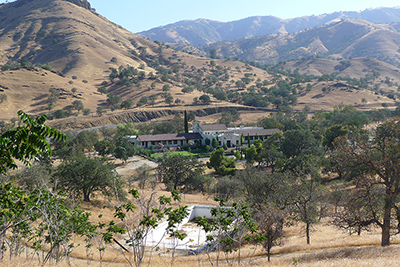
NPS
While the UFW began in Delano, California, Chávez began to think that a move away from their previous headquarters at Forty Acres in Delano might allow the union to broaden its profile and thus improve its ability to serve farmworkers in other parts of California and the U.S. Chávez also recognized a need for a personal refuge.
During the 1970s, Chávez traveled constantly, meeting with union members, labor leaders, public officials, community organizations, church groups, and industry representatives. As he endured stretches of several months during which he would spend only a handful of days at La Paz, he made the most of his time at La Paz. He spent long hours in his office, with its bare floors and second hand furniture. He also devoted his attention to strategy sessions, conferences, and meetings. But he also made time to be with his family, to walk the dirt roads, to climb the mountainsides and meditate, to read and reflect, to work in the gardens, to train his German Shepherds, to attend weekly Mass, and to join in celebrations, all of which he did outside of his office. Indeed, Chávez's presence outside hiking, sharing meals, gardening, thinking, and praying helped define La Paz, just as La Paz helped Chávez define himself.
But La Paz was not just a place that allowed Chávez to retreat and recharge; it was a place that helped him envision new directions for the UFW. He spoke of this effort in 1975: "After we've got contracts, we have to build more clinics and co-ops," he told writer Jacques Levy. "Then there's the whole question of political action, so much political work to be done taking care of all the grievances that people have, such as the discrimination their kids face in school, and the whole problem of the police ... We have to participate in the governing of towns and school boards," he continued. "We have to make our influence felt everywhere and anywhere. It's a long struggle that we're just beginning, but it can be done because the people want it." Chávez viewed La Paz as a place in which to prepare farmworkers and their allies for this struggle. It was a place where he could bring people in and "put them in a new surrounding where he could work with them to develop the skills necessary to move things forward," his son Paul Chávez explained. "And so he always had conferences here to pull people in. You could get [them] out of the heat, and I'm not talking just about the temperature, I'm talking about the battle of fighting …You pull them up here and give people a chance to really disengage and take a deep breath… and look at things more strategically." For Chávez, La Paz was a great place "to bring people and to work with them, and to teach them, prepare them, and inspire them."
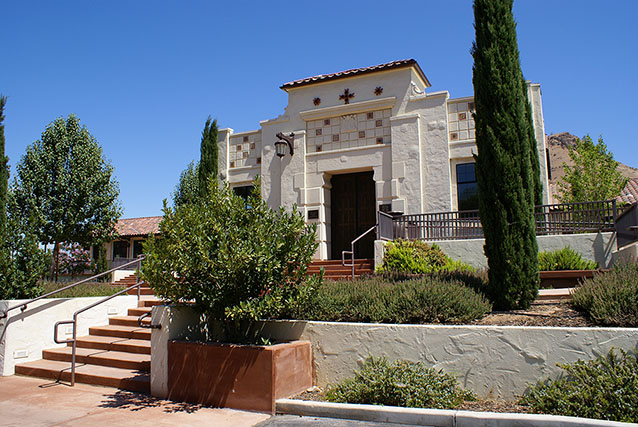
NPS
The acquisition of La Paz reflected the full emergence of the UFW as a permanent labor union. As his brother Richard Chávez has explained, La Paz became significant "because that's where we moved when we really had arrived. We were really a serious union and we had arrived." He associated the acquisition of La Paz with the arrival of the UFW but also with the beginning of far reaching changes in the union. "We started changing. Our lives changed and everything changed, [including] our way of doing things. Many of these changes turned La Paz into the crossroads of the UFW. Hundreds of men, women, and children called La Paz their home, but thousands more came from around California and the rest of the country to learn how to operate their union and increase their own capacity to affect political and social change." As Richard's comments indicate, La Paz became the new symbol of the UFW. It became associated with past achievements but also new horizons, including the modernization of the UFW.
All of the UFW's central administrative staff moved to La Paz during the 1970s, including the board of directors and their offices, the accounting department, the trust funds (health care and pension plans) management department, the membership department, the contract negotiation department, the boycott organization department, the records department, the training department, and, in 1979, the legal department. Other organizations opened offices at La Paz as well, including the NFWSC, the union newspaper (EI Malcriado), the huelga school for younger children, the Fred Ross School for training labor contract negotiators, and the radio station (Radio Campesina).
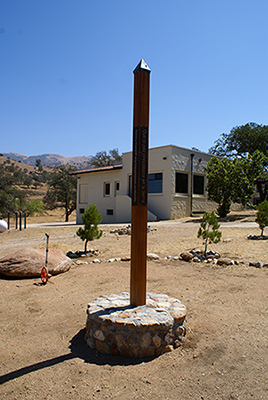
NPS
Under Chávez's leadership, the UFW secured unprecedented gains during their years at La Paz, including the passage of the first law in the continental United States that recognized agricultural laborers' collective bargaining rights (the California Agricultural Labor Relations Act of 1975) and the signing and administration of contracts that brought myriad improvements in farm workers' lives across the nation. These contracts covered more than 100,000 farmworkers, raised farmworkers' wages above the poverty level, replaced a labor contracting system with union run hiring halls, established grievance procedures, funded health care and pension plans for farmworkers, mandated the provision of clean drinking water and restroom facilities in the fields, regulated the use of pesticides in the fields, and established a fund for community service projects. The UFW directed this fund, in large part, toward the development of service centers that provided an array of goods and services for farmworkers including gasoline and groceries, health care, banking services, legal assistance, child care, automobile repair, and low income housing.
La Paz is the property tied most closely to these developments, primarily because Chávez relocated the UFW's administrative offices and his own residence to La Paz in 1971, but also because thousands of union members themselves came to La Paz to help devise and implement organizing strategies, to receive training in contract administration, and to strengthen their sense of solidarity. This spectrum of activity and achievement has given the property connections to four areas of significance: the history of the agriculture industry, social history, Hispanic heritage, and political history.
Overall, the monument is defined by a commemoration of an important person in United States history, the natural environment that is intertwined in the site’s developed areas, and the community that left a lasting impression on the site and the nation’s history.

Quick Facts
- Cultural Landscape Type: Historic Designed Landscape
- National Register Significance Level: National
- National Register Significance Criteria: A, B
- Period of Significance: 1970-1984
Landscape Links
Last updated: November 18, 2020
